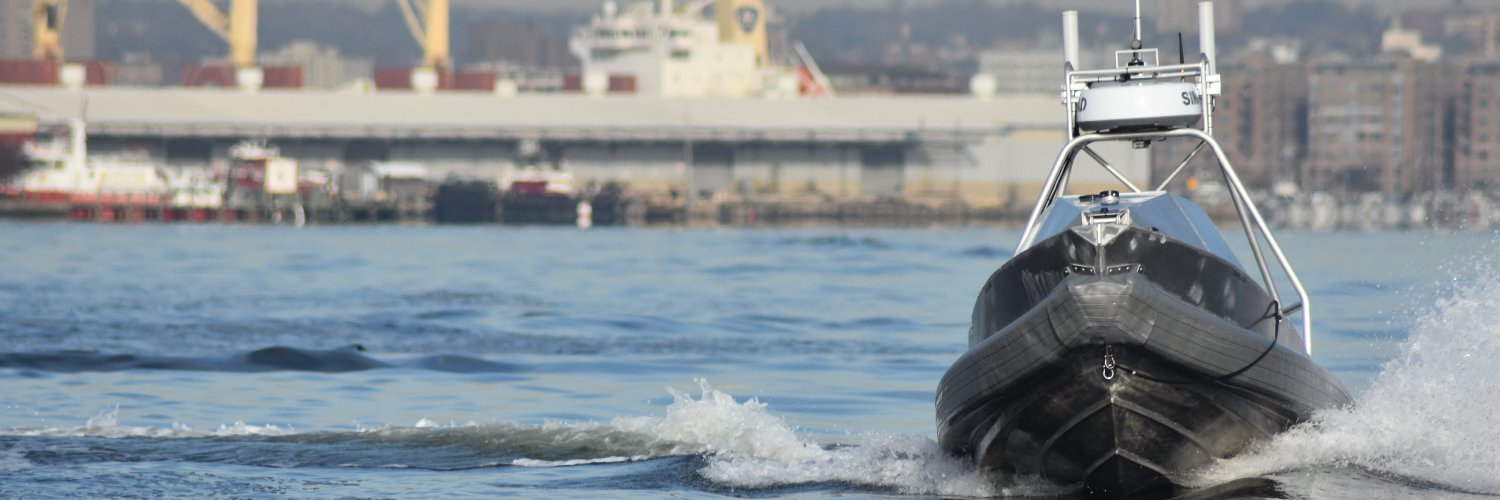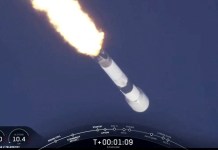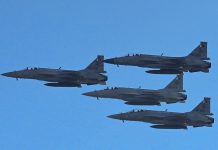The US Navy aims to build a fleet of unmanned surface vessels (USVs) that can challenge the Chinese People’s Liberation Army Navy (PLAN) in the event of a conflict. However, the plan appears to be floundering.
The significance of unmanned surface vessels, popularly known as drone boats, has been demonstrated in the ongoing Ukraine conflict, where these robotic boats were deployed by Kyiv’s forces to launch devastating naval strikes on the Russian Black Sea Fleet (BSF).
Ukraine achieved this despite not having a conventional Navy, inspiring countries across the world to develop similar capabilities.
Based on this, the US military chiefs have insisted that they require autonomous swarms of aerial and maritime drones to thwart a possible Chinese offensive across the Taiwan Strait.
A host of programs for the development, testing, and acquisition of these systems exist. However, these attempts seem to be flailing despite the priority accorded to the capability, as recently highlighted by an exclusive Reuters report.
The report cites two instances of failed testing of drone boats.
During a US Navy test off the California coast in July 2025, an autonomous drone boat experienced a software glitch, causing it to stall. As officials rushed to fix the error, another drone struck the starboard side of the idling drone boat, leaped over the deck, and then plummeted back into the water. Reuters has also obtained a video of the incident.
Citing a dozen people familiar with the program, the report states that this previously undisclosed incident involved two vessels constructed by rival US defense tech companies Saronic and BlackSea Technologies, and represents one of several recent failures in the Pentagon’s efforts to develop a fleet of autonomous vessels.
🚨 The US Navy's drone fleet project to counter China faced setbacks.
In a recent test off California, a software glitch caused one autonomous drone boat to stall, leading another to crash into it, vault over the deck, and land in the water.
The incident involved vessels from… pic.twitter.com/PpodUbhulT
— American Press 🗽 (@americanspress) August 20, 2025
The report also cited a separate incident that occurred weeks before this one. “Weeks earlier, during a separate Navy test, the captain of a support boat was thrown into the water after another autonomous BlackSea vessel it was towing suddenly accelerated, capsizing the support boat, according to four people familiar with the matter,” it states.
This incident, which earlier failed to garner significant attention, was first reported by another publication, Defense Scoop.
At the time, the Defense Scoop report quoted a spokesperson from Naval Information Warfare Systems Command (NAVWAR) as saying: “An incident occurred at approximately 3:28 p.m. [local time] on June 23 within the Channel Islands Harbor Marina involving the overturning of a support boat by an unmanned vehicle that was being towed out of the harbor.” However, the spokesperson did not say which sea drone was involved.
Both incidents cited in the report were caused by a mix of human mistakes and software malfunctions, including communication breaks between external autonomous software and onboard systems, according to a person with firsthand knowledge of the situation.
If true, this essentially means that the US is largely floundering in its efforts to develop potent sea drones, even as a country like Taiwan, which is largely dependent on the US for its arms purchases, is now rapidly developing a naval drone capability to deter Chinese amphibious landings should an invasion take place.
The US Navy or the two companies mentioned in the report have not commented on the claims made by Reuters at the time of writing this report.
US Navy’s Sea Drone Goals Are Shaky
The US Navy’s ambition to build a fleet of sea drones, particularly unmanned surface vessels (USVs) and unmanned underwater vehicles (UUVs), is a strategic push to enhance naval capabilities with an eye on China.
While the service has been working on autonomous sea capabilities for a while, it was the use of sea drones by Ukrainian forces that gave the effort further impetus.
Besides launching attacks on Russian ships, Ukraine’s USVs have achieved unprecedented milestones, such as shooting down Russian aircraft, including the Su-30 and the Mi-8 military helicopter. You can read a detailed EurAsian Times report on some of the most stunning attacks launched by these autonomous vessels here.
The current worldwide focus on scaling the production of USVs is also heavily influenced by the spectacular success. The US Navy is no different.
The drones being developed in Ukraine are mainly remote-controlled, cost close to $250,000, and resemble speedboats without seats. They can carry weapons, explosives, and surveillance equipment, making them ideal for kamikaze missions that have successfully destroyed Russia’s Black Sea Fleet.
However, the Reuters report states that the US is working toward a more ambitious goal of developing an autonomous naval fleet that can move in swarms and without human command, costing up to a few million dollars per speedboat.

The two testing failure incidents seem to have spilled cold water on the efforts, quite literally. According to Bryan Clark, an autonomous warfare specialist at the Hudson Institute, the Navy’s attempt to implement the emerging technologies is beset by difficulties, as evidenced by the recent test failures. The company will have to modify its “tactics as it better understands what the systems can do and what they can’t do.”
However, the report states that the US Navy’s troubles extend beyond getting the boats to function, including in the autonomous maritime drone acquisition unit. In May 2025, Rear Admiral Kevin Smith was abruptly fired, citing “loss of confidence” based on a complaint substantiated by an Office of the Naval Inspector General investigation. The specific nature of the complaint was not disclosed. Smith was the Program Executive Officer for Unmanned and Small Combatants (PEO USC), overseeing the design, development, construction, maintenance, and modernization of unmanned maritime systems.
This firing showed that there is brewing internal dissatisfaction with the program’s progress.
Under Smith’s command since June 2023, the PEO USC was tasked with implementing the Navy’s bold plan to incorporate USVs into a hybrid fleet to combat threats, especially those originating from China. However, in an April 2025 LinkedIn post, Colin Carrol, then-chief of staff to Deputy Secretary of Defense Steven Feinberg, pointed out that the program was criticized for being inefficient and replicating previous Pentagon initiatives.
In a July 2025 meeting, Feinberg expressed discontent with the program’s advancement and asked Navy officials about its cost-effectiveness and capabilities. Perhaps Smith was under more pressure as a result of this examination.
Separately, the Pentagon’s Defense Innovation Unit (DIU) has also reportedly halted a $20 million contract with L3Harris, a key provider of autonomous software, pending a review. “Pentagon’s Defense Innovation Unit (DIU), which had acquired technology for the tests, has indefinitely paused a contract valued close to $20 million with L3Harris, one of the companies providing autonomous software used to control some of the vessels, according to two people familiar with the matter,” the report stated. The Pentagon did not respond to questions about the cause of the accidents or the L3Harris contract being paused.
Military sea drones can include missile-armed speedboats, small submarines for minehunting, and solar-powered sailboats outfitted with underwater sensors, high-definition surveillance cameras, and loudspeakers for warning enemy ships. However, the Navy hasn’t always had the fleet competence to use sea drones on reconnaissance missions in recent years.
Previous reports suggested that there were insufficiently skilled Navy sailors to operate drones or decipher the massive amounts of data sent by the craft’s cameras and sensors. The latest test failures suggest that the problems are more deeply rooted than previously envisioned and have likely compounded in recent times.
The Sea Drone Effort Against China
This capability is meant to offset the numerical advantage of the PLAN in the event of a conflict in the Indo-Pacific that could be triggered if China invades Taiwan. Drones are viewed as scalable and reasonably priced tools for combat, surveillance, and reconnaissance in contested areas. Moreover, the US Navy wants to create a “hybrid fleet” in the future that combines manned ships with autonomous vessels to extend reach, reduce risk to crew, and lower operational costs.
Naval observers have been predicting that the swarms of cheap underwater drones could pose the biggest threat to Chinese submarines. Thousands of drones could be released by warships, submarines, or massive drone motherships. These swarming systems may teem the ocean, migrate as per operational needs, and provide long-endurance observation capability. A target can be overrun by a swarm of small drones.
While they might be able to sink a warship, they might easily take down its defenses and radar, making it vulnerable to other weapons.
Earlier, the US Navy unveiled the ‘Project 33’, a comprehensive seven-point strategy to counter Beijing’s growing aggression in the Indo-Pacific region, with a focus on preparing for a possible Chinese invasion of Taiwan by 2027. The Chief of Naval Operations (CNO), Admiral Lisa Franchetti, unveiled the program in September last year, saying that through the Ukraine conflict and the combat in the Red Sea, the US military gained valuable insights into the future of naval warfare, such as the use of robotic platforms and more affordable munitions to impose “asymmetric sea denial.”
The Defense Initiative Unit (DIU) said that the US Navy is looking for “small Unmanned Surface Vehicle (sUSV) interceptors capable of autonomously transiting hundreds of miles through contested water space, loitering in an assigned operating area while monitoring for maritime surface threats, and then sprinting to interdict a non-cooperative, maneuvering vessel.” It indicated that the low-cost platforms sought by the DIU could go into production next year. The aim is to build 10 or more systems per month, which would have an annual production rate of 120 or more such drones.
Separately, the Pentagon started the $1 billion Replicator initiative in 2023 to speed up its drone endeavor. The DIU and the US Navy, for example, intended to purchase thousands of aerial and maritime drones and the software needed to operate them. The first systems from this program are due to be announced sometime this month.
US President Donald Trump has doubled down on existing efforts, with his latest defense bill allocating nearly $5 billion specifically for autonomous naval systems. The failures, fractures in leadership, and the discontent within the force suggest that, despite the best intent and prioritization of the capability, the strategy continues to suffer
- Contact the author at sakshi.tiwari9555 (at) gmail.com
- Follow EurAsian Times on Google News




